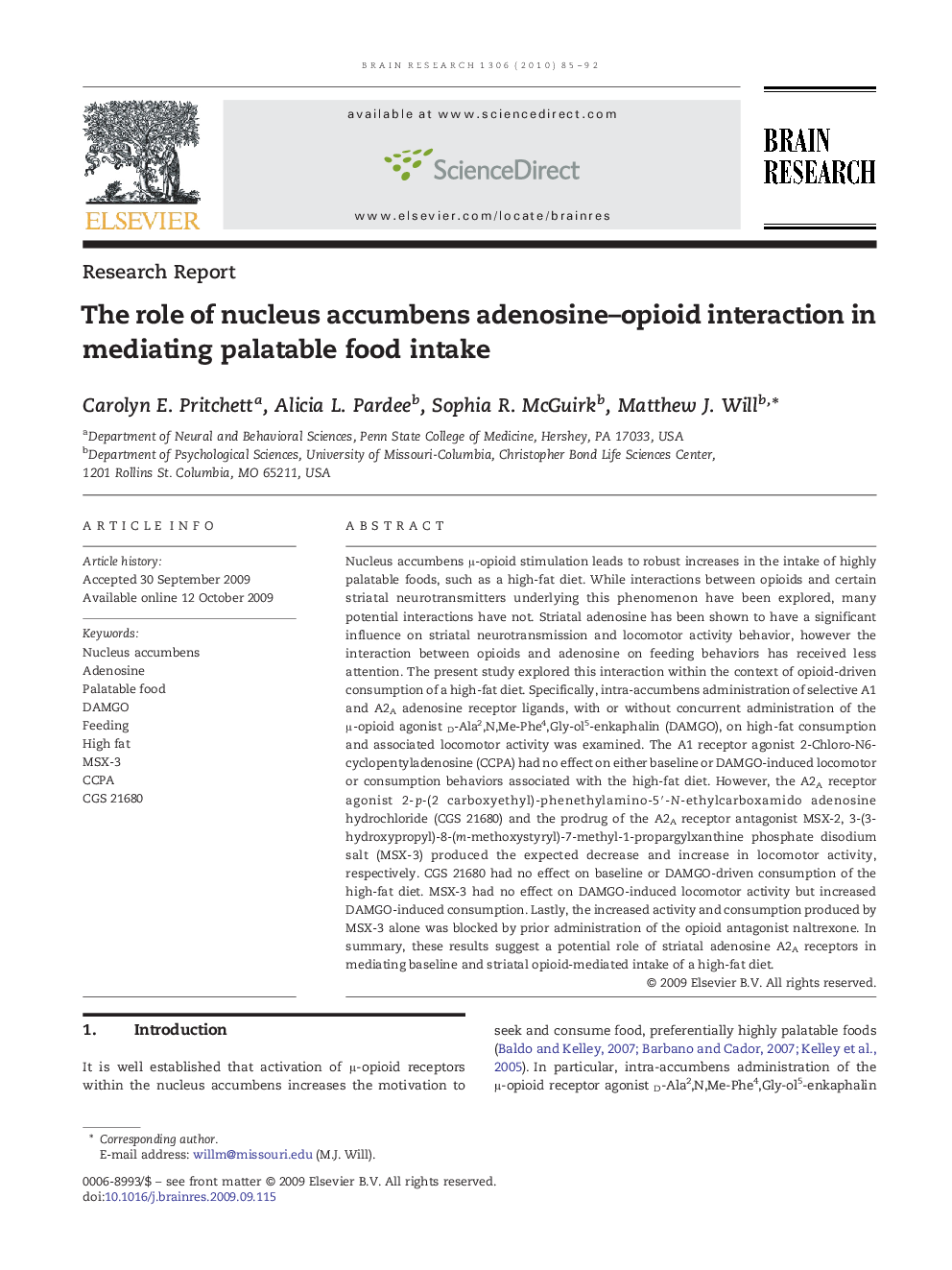| Article ID | Journal | Published Year | Pages | File Type |
|---|---|---|---|---|
| 4327553 | Brain Research | 2010 | 8 Pages |
Nucleus accumbens μ-opioid stimulation leads to robust increases in the intake of highly palatable foods, such as a high-fat diet. While interactions between opioids and certain striatal neurotransmitters underlying this phenomenon have been explored, many potential interactions have not. Striatal adenosine has been shown to have a significant influence on striatal neurotransmission and locomotor activity behavior, however the interaction between opioids and adenosine on feeding behaviors has received less attention. The present study explored this interaction within the context of opioid-driven consumption of a high-fat diet. Specifically, intra-accumbens administration of selective A1 and A2A adenosine receptor ligands, with or without concurrent administration of the μ-opioid agonist D-Ala2,N,Me-Phe4,Gly-ol5-enkaphalin (DAMGO), on high-fat consumption and associated locomotor activity was examined. The A1 receptor agonist 2-Chloro-N6-cyclopentyladenosine (CCPA) had no effect on either baseline or DAMGO-induced locomotor or consumption behaviors associated with the high-fat diet. However, the A2A receptor agonist 2-p-(2 carboxyethyl)-phenethylamino-5′-N-ethylcarboxamido adenosine hydrochloride (CGS 21680) and the prodrug of the A2A receptor antagonist MSX-2, 3-(3-hydroxypropyl)-8-(m-methoxystyryl)-7-methyl-1-propargylxanthine phosphate disodium salt (MSX-3) produced the expected decrease and increase in locomotor activity, respectively. CGS 21680 had no effect on baseline or DAMGO-driven consumption of the high-fat diet. MSX-3 had no effect on DAMGO-induced locomotor activity but increased DAMGO-induced consumption. Lastly, the increased activity and consumption produced by MSX-3 alone was blocked by prior administration of the opioid antagonist naltrexone. In summary, these results suggest a potential role of striatal adenosine A2A receptors in mediating baseline and striatal opioid-mediated intake of a high-fat diet.
